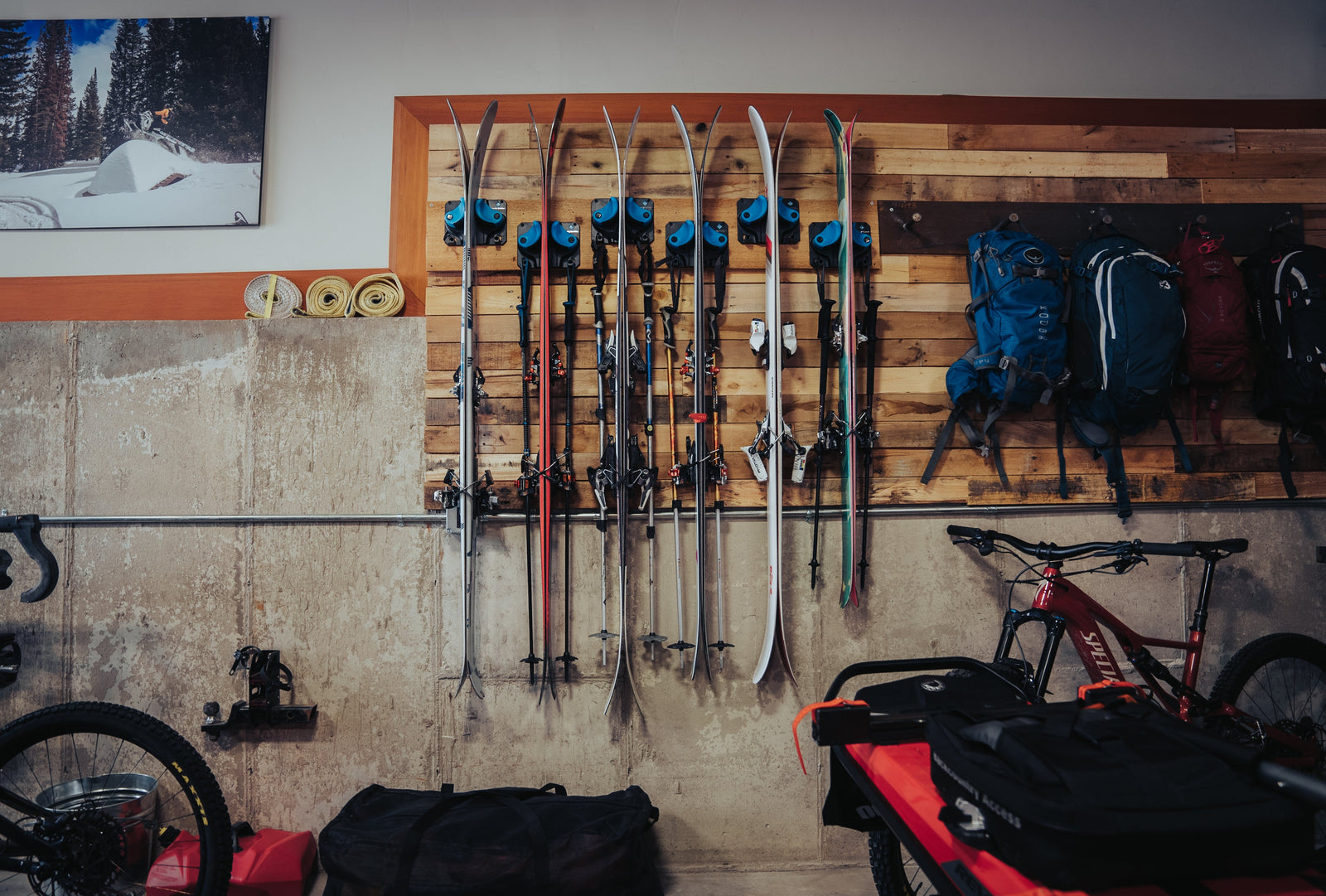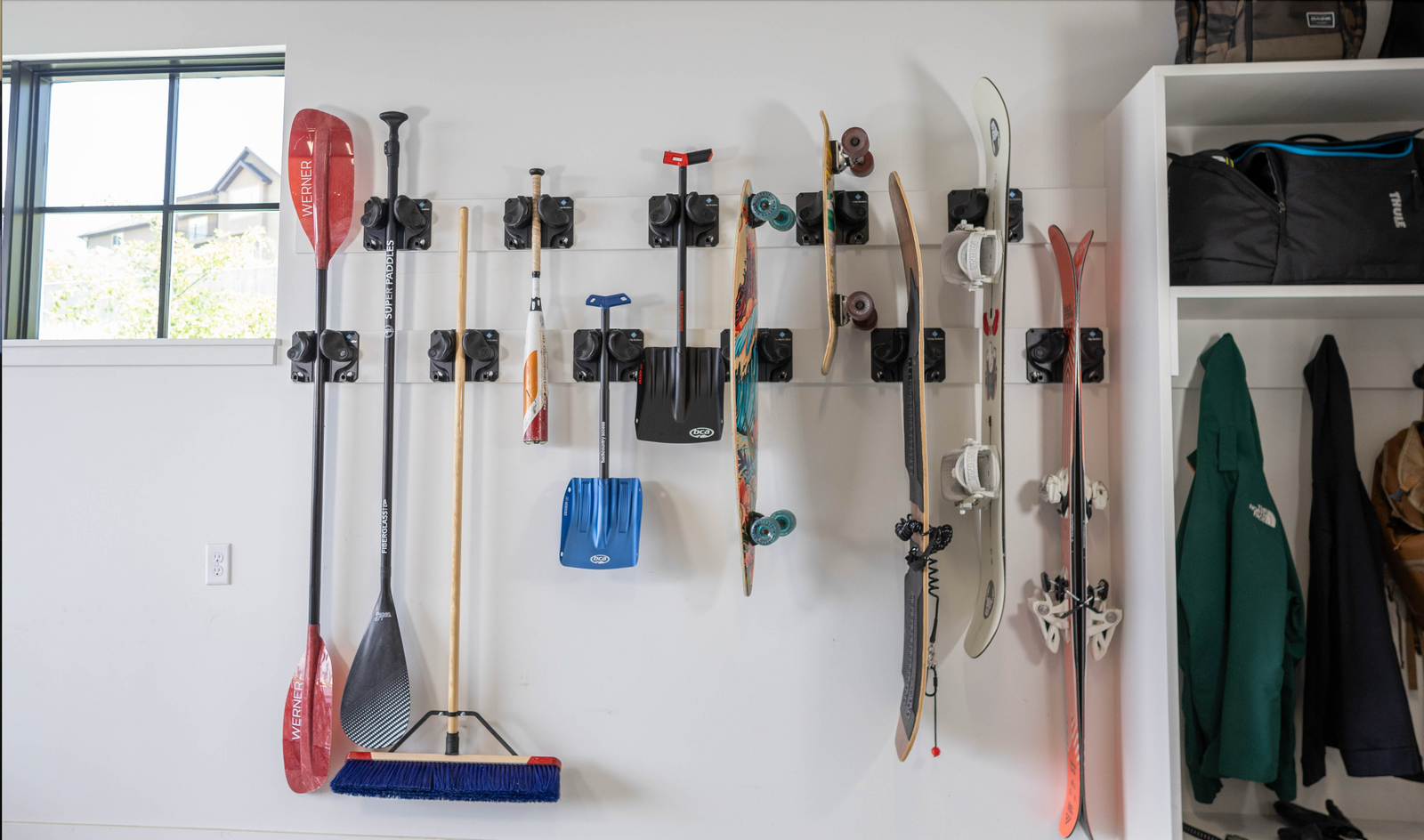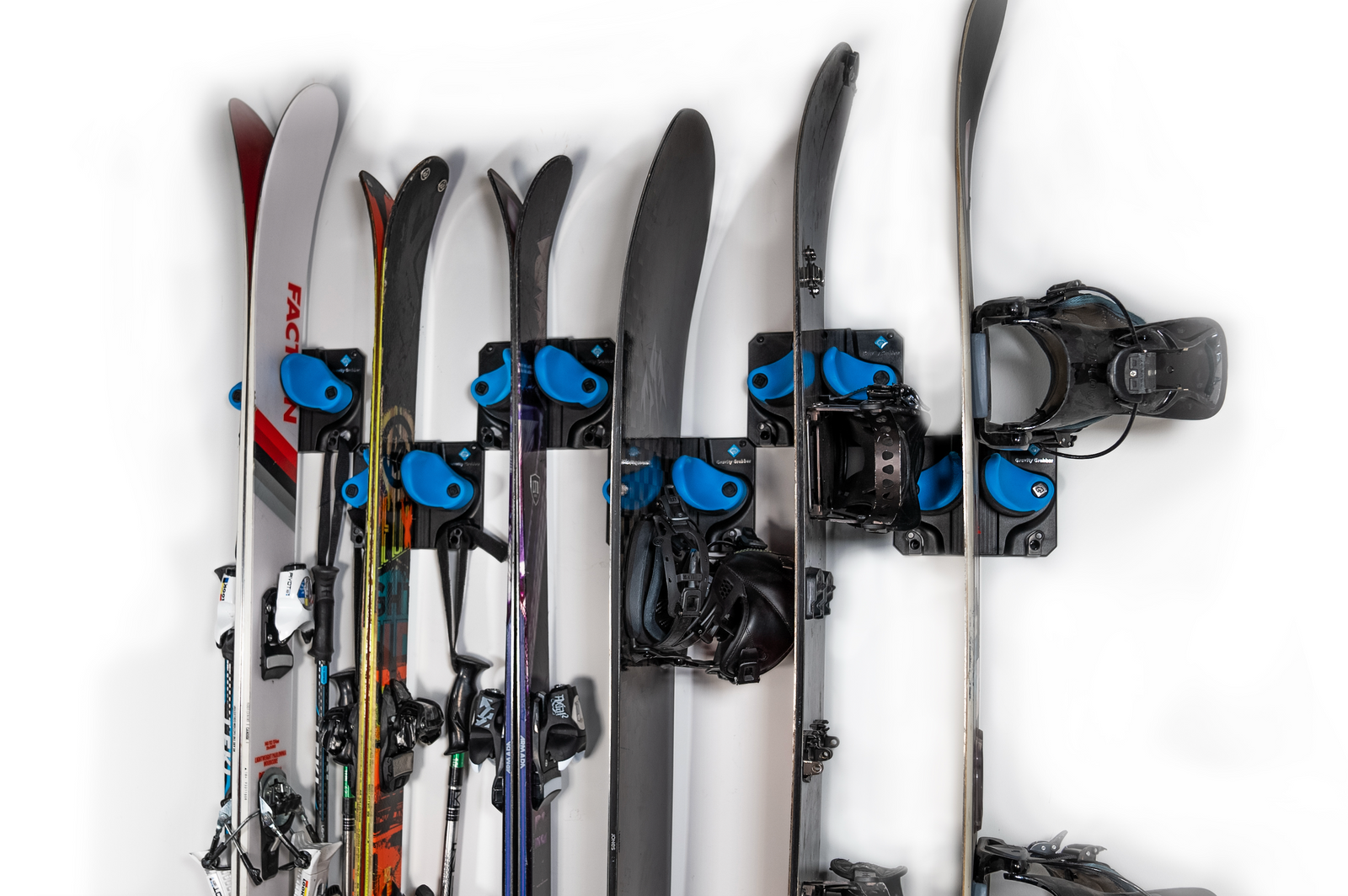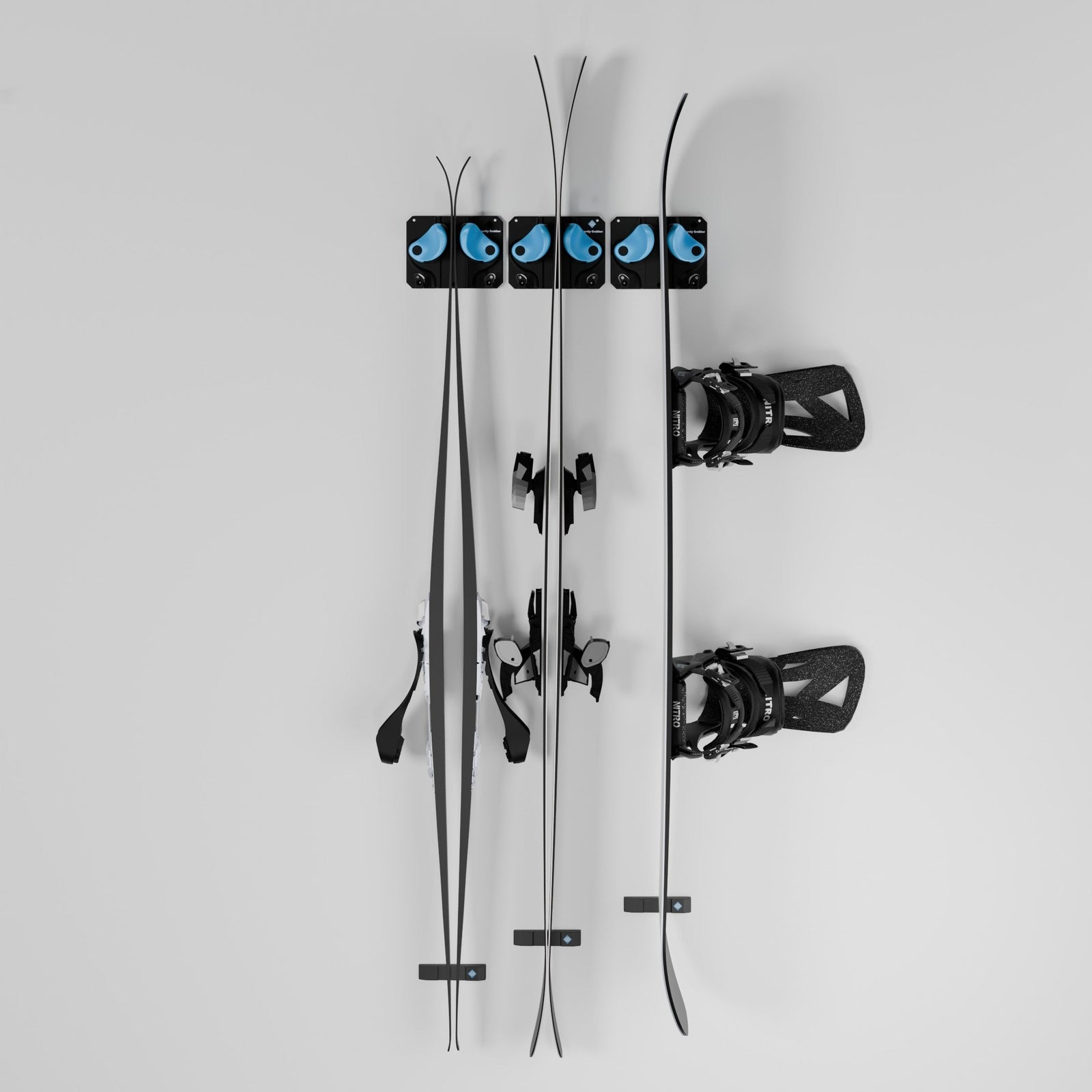Why Comparing Ski Racks Matters
When it comes to ski storage, not all racks are created equal. Some designs are inexpensive but rough on gear, while others take up too much space. Since skis are a big investment, choosing the right rack can mean the difference between gear that lasts for years and skis that get damaged in the garage.
That’s why it’s worth asking: how does the Gravity Grabber ski rack compare to other ski racks?
Traditional Ski Rack Options
-
Wooden Slot Racks
-
Pros: Sturdy, classic, can hold multiple skis at once.
-
Cons: Skis sit in narrow slots that concentrate pressure on a small area, which can lead to scratches or warped profiles over time.
-
-
Metal Hook Systems
-
Pros: Cheap, widely available, easy to install.
-
Cons: Hard edges and narrow contact points can damage skis. Many aren’t padded, so edges and bases scrape easily.
-
-
Freestanding Floor Racks
-
Pros: Portable and useful in gear rooms or basements.
-
Cons: Take up valuable floor space, and skis often bump into each other, causing dings and chips.
-
-
Wall-Mounted Flexible Racks (Modern Option)
-
Pros: Use vertical wall space, keep skis upright, protect gear from falling or scratching.
-
Cons: Quality varies—some rely on small contact points rather than wide grips.
-
How Gravity Grabber Compares
The Gravity Grabber belongs to the wall-mounted category but was designed to improve on the flaws of older systems.
-
Wide, Padded Arms: Unlike wooden slots or hooks, Gravity Grabber spreads contact across a broad, cushioned surface. This prevents pressure points, scratches, and warping.
-
Custom Placement: Skis don’t have to hang by the tips. You can secure them anywhere along their length—even near the bindings, where skis are strongest.
-
Gentle but Secure Grip: Spring-loaded arms hold skis firmly upright without clamping too tightly.
-
Space Efficiency: Wall-mounted design clears floor space, making it ideal for garages and mudrooms.
-
Multi-Season Versatility: Unlike traditional ski racks, Gravity Grabber also works for snowboards, paddles, fishing rods, tools, and sports gear.
Security and Safety
Some skiers wonder about “security” when comparing racks. Gravity Grabber is not a lockable rack—it’s designed for indoor gear protection and organization, not theft prevention. Compared to freestanding or hook systems, though, it’s far more secure in the sense that skis don’t slide, tip, or fall unexpectedly.
For skiers who want peace of mind about both safety and organization, Gravity Grabber provides a balance of secure indoor storage and equipment protection.
Which Rack Is Right for You?
-
Choose Wooden Racks if you prefer a traditional look and don’t mind floor use.
-
Choose Hooks if you need a very cheap, temporary solution.
-
Choose Freestanding Racks if you have plenty of floor space and want portability.
-
Choose Gravity Grabber if you want the best combination of protection, versatility, and space savings in your garage or mudroom.
Conclusion
When comparing ski rack options, it’s clear that the Gravity Grabber is engineered to solve problems common with other systems. Its wide, padded arms, flexible placement, and space-saving design keep skis safe from scratches and warping—something hooks and wooden racks often fail to do.
Add in its ability to hold gear year-round, and Gravity Grabber stands out as a smarter, more versatile ski rack for modern skiers.
Related FAQs: Comparing Ski Racks
Q: How is Gravity Grabber safer than wooden slot racks?
A: Wooden racks concentrate pressure on narrow slots, which can warp skis. Gravity Grabber spreads contact across padded arms for even support.
Q: Does Gravity Grabber work for both skis and snowboards?
A: Yes. The wide grip adapts easily to both skis and snowboards, unlike some racks that are single-purpose.
Q: Is Gravity Grabber more secure than hook systems?
A: Yes. Hooks often let skis slide or tip over. Gravity Grabber’s spring-loaded arms hold skis upright and steady without damage.
Q: What’s the main advantage of Gravity Grabber over freestanding racks?
A: Space. Gravity Grabber mounts to the wall, freeing up valuable garage floor area that freestanding racks consume.




